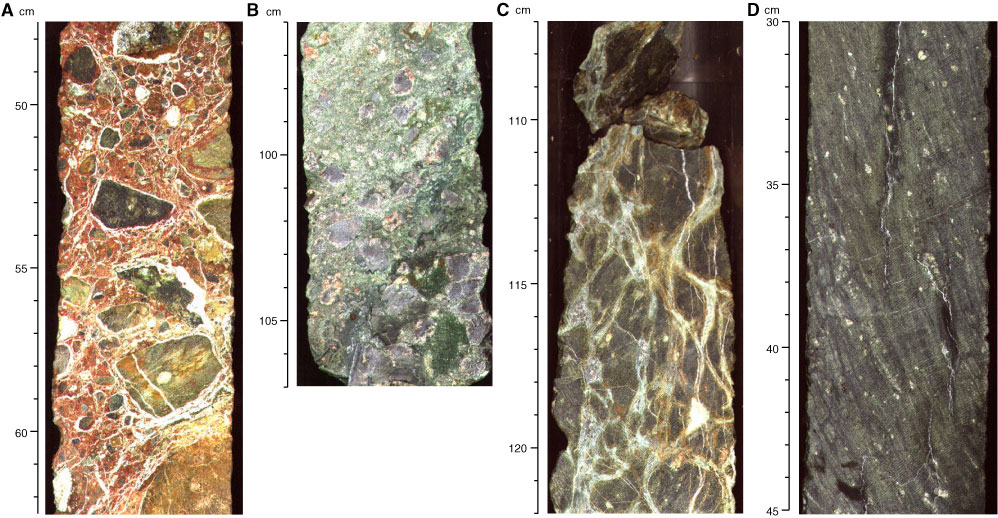
Frontispiece. Examples of basement rocks cored at Site 1277 in the Newfoundland Basin. A. A mass-flow deposit consisting of subangular to rounded clasts of serpentinized peridotite (with spinel foliation) and rare gabbros in a clay-rich calcareous matrix (interval 210-1277A-4R-1, 47.5–62.5 cm; 123.5 mbsf). B. An altered gabbro containing plagioclase and pyroxene porphyroblasts in a strongly altered, weakly foliated, chlorite-rich matrix (interval 210-1277A-2R-1, 96–107 cm; 104.9 mbsf) lies ~19 meters above A. The gabbro is interpreted to be a sliver of crust displaced by mass movement at the contemporary seafloor. Only serpentinized peridotites were recovered in the lower part of the hole, and these are interpreted to represent in situ basement that was unaffected by mass wasting. C. A homogeneous, foliated, porphyroclastic serpentinized peridotite dissected by a polyphase network of calcite and talc veins (interval 210-1277A-7R-2, 107–122 cm; 154.3 mbsf). D. A massive, foliated, serpentinized peridotite (harzburgite). The strong foliation is interpreted to be mylonitic (crystal-plastic recrystallization of olivine with porphyroblasts of pyroxene) (interval 210-1277A-9R-4, 30–45 cm; 175.3 mbsf).
